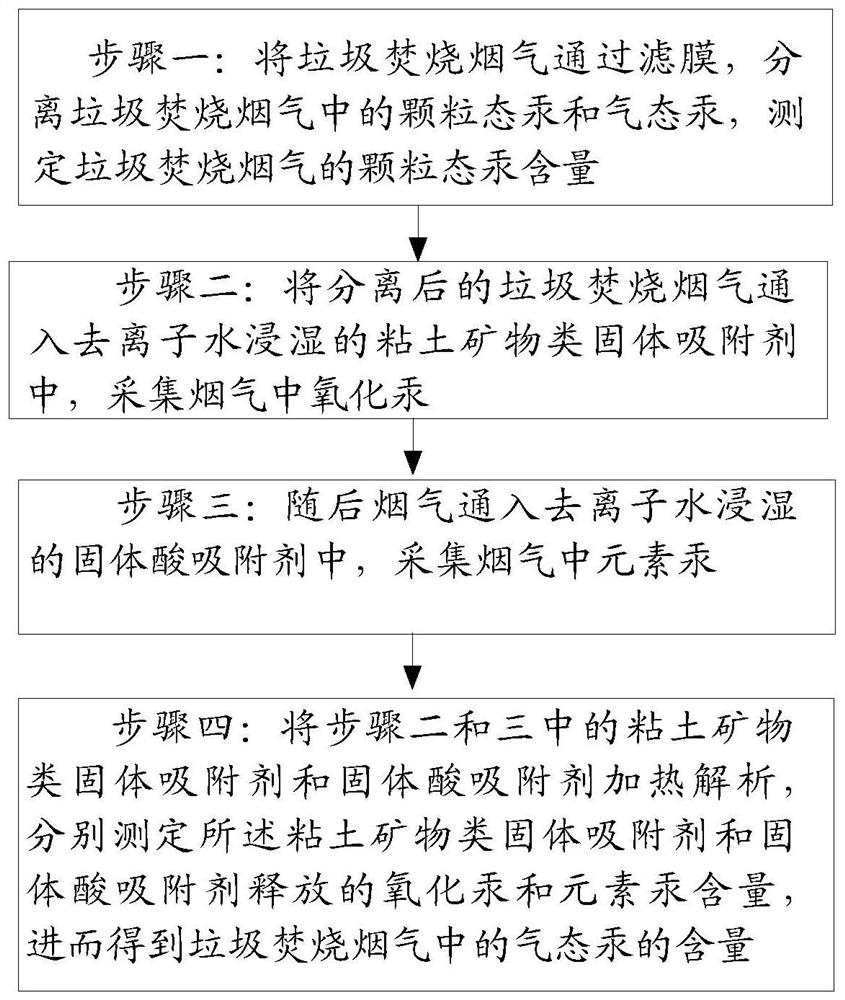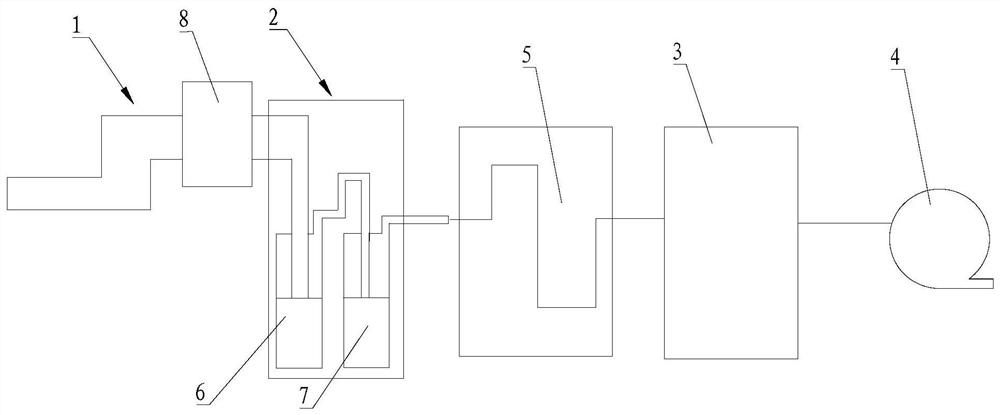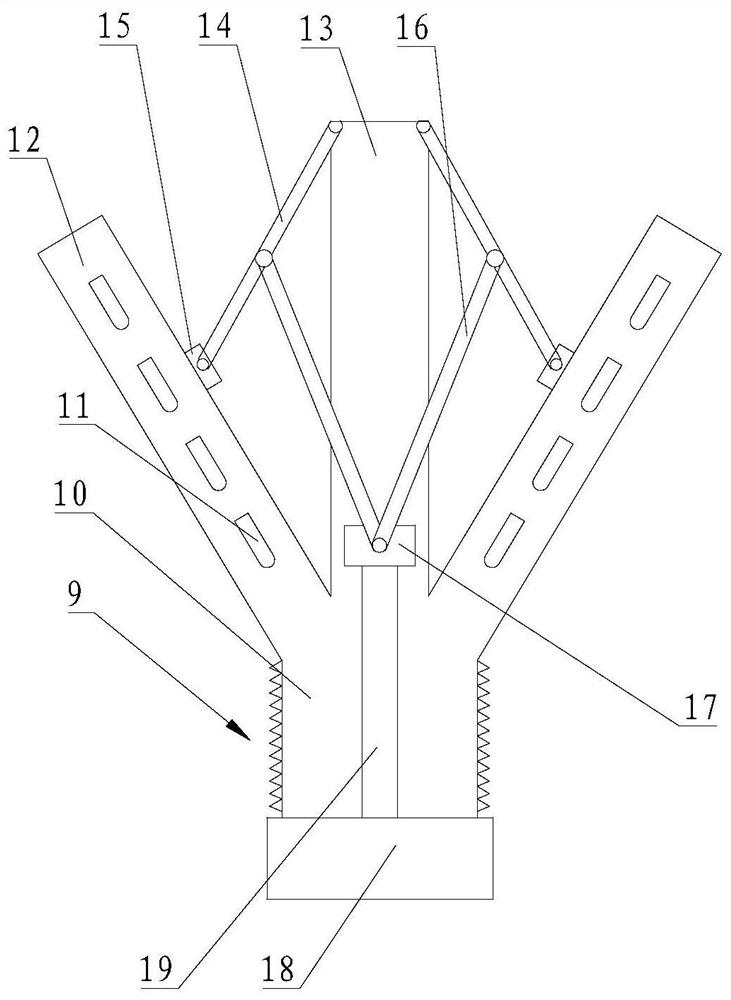Detection method and collection device for mercury in waste incineration flue gas
A technology of waste incineration and detection methods, which is applied to the construction details of measuring devices, sampling devices, and gas analyzers. The effect of detection cost, simple and efficient collection operation
- Summary
- Abstract
- Description
- Claims
- Application Information
AI Technical Summary
Problems solved by technology
Method used
Image
Examples
preparation example Construction
[0037] The preparation method of described solid acid is as follows:
[0038] 60g molecular sieves were placed in 200mL ammonium disulfate solution (1mol / L), and stirred at a stirring speed of 950r / min for 1h at room temperature. Then let it stand for a while and remove the supernatant, then transfer to a crucible and dry in an oven at 110°C. Under air atmosphere, the dried solid acid was calcined in a muffle furnace at 550 °C for 3 h, and finally ground to a uniform level.
[0039] Further, the specific steps for determining the content of particulate mercury in said step one are:
[0040] Detect the quality of the filter membrane before separation;
[0041] Detect the quality of the filter membrane after separation;
[0042] Calculate the content of particulate mercury in waste incineration flue gas according to the absolute value of the difference between the two.
[0043] It can be seen from the above description that since the particulate mercury is separated, the acc...
Embodiment 1
[0059] Please refer to figure 1 , a method for detecting mercury in waste incineration flue gas, comprising the following steps:
[0060] Step 1: Separating particulate mercury and gaseous mercury through a filter membrane under the condition that the collected quantitative waste incineration flue gas is not lower than the temperature of the waste incineration flue gas at the time of collection;
[0061] Detect the quality of the filter membrane before separation;
[0062] Detect the quality of the filter membrane after separation;
[0063] Calculate the content of particulate mercury in waste incineration flue gas according to the absolute value of the difference between the two.
[0064] Step 2: Pass the separated waste incineration flue gas into the clay mineral solid adsorbent soaked in deionized water under the condition that the ambient temperature is not lower than the temperature of the waste incineration flue gas at the time of collection, and collect the mercury ox...
Embodiment 2
[0069] Please refer to Figure 2 to Figure 4 , a collection device for mercury in waste incineration flue gas, comprising a constant temperature sampling gun 1, a constant temperature adsorption bottle box 2, a sampling controller 3 and a sampling air pump 4, the sampling head 9 of the constant temperature sampling gun 1 stretches into the flue, The inside of the constant temperature sampling gun 1 adopts polytetrafluoroethylene coating film, polytetrafluoroethylene is resistant to high temperature, moisture resistance, high corrosion resistance, high wear resistance, non-sticky surface, suitable for high temperature, high humidity, high corrosion smoke Air detection environment.
[0070] Described constant temperature sampling gun 1 is provided with constant temperature filter 8, and described constant temperature filter 8 comprises filter membrane, and described filter membrane is Teflon filter membrane, and Teflon filter membrane has chemical stability and inertia, is suita...
PUM
| Property | Measurement | Unit |
|---|---|---|
| angle | aaaaa | aaaaa |
Abstract
Description
Claims
Application Information
 Login to View More
Login to View More - R&D
- Intellectual Property
- Life Sciences
- Materials
- Tech Scout
- Unparalleled Data Quality
- Higher Quality Content
- 60% Fewer Hallucinations
Browse by: Latest US Patents, China's latest patents, Technical Efficacy Thesaurus, Application Domain, Technology Topic, Popular Technical Reports.
© 2025 PatSnap. All rights reserved.Legal|Privacy policy|Modern Slavery Act Transparency Statement|Sitemap|About US| Contact US: help@patsnap.com



